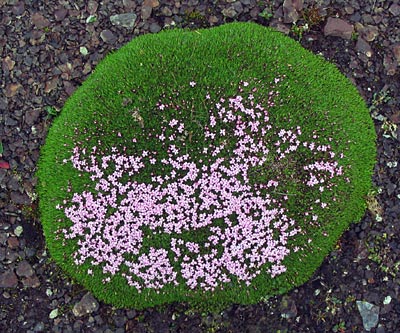
At The Olive Tree blog, Tracey Switek has at least one answer. In cold places, you see more plants that grow in little mounded clumps. Of course, plants can't really rely on huddling together to create warmth. So you still have to ask, "Why is it better to grow in a mound when it's cold out?"
The dome-like shape which the cushions tend to take (made possible by an adaptation that makes all the plants in the clump grow upward at the same rate, so no one plant is high above all the others), and the closeness with which those plants grow, makes these clumps perfect heat traps. The temperature on or inside a cushion can be up to 15 °C more than the air temperature above it. The cushions are able to retain heat radiating up from the soil, as well as absorbing heat from the sun (a very dense, large, clump of green can get surprisingly warm on a sunny day at high altitude). Add to that the fact that the wind speed in and around a cushion can be cut by up to 98% from open areas, you have a perfect recipe to prevent heat loss. Many alpine cushion plants also have very hairy leaves, which trap even more heat within. This allows the plants to maintain a relatively stable, warmer than average microclimate that is resistant to sudden changes in weather and temperature outside (such as freezing temperatures at night or sudden storms). Interestingly enough, this stabilizing effect can also be a benefit when it gets too hot out, maintaining lower temperatures against baking sunshine.Very cool!

No comments:
Post a Comment